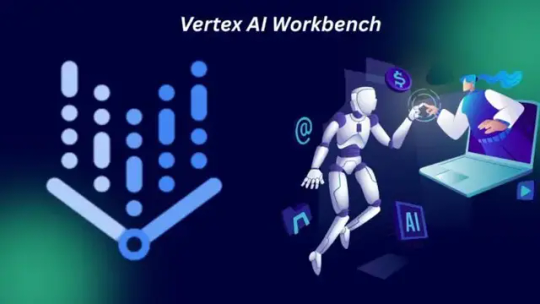#VertexAIWorkbench
Explore tagged Tumblr posts
Text
Vertex AI Workbench Pricing, Advantages And Features

Get Vertex AI Workbench price clarity. Take use of its pay-as-you-go notebook instances to scale AI/ML applications on Google Cloud.
Secret Vertex AI Workbench
Google Cloud is expanding Vertex AI's Confidential Computing capabilities. Confidential Computing, in preview, helps Vertex AI Workbench customers meet data privacy regulations. This connection increases privacy and anonymity with a few clicks.
Vertex AI Notebooks
You can use Vertex AI Workbench or Colab Enterprise. Use Vertex AI Platform for data science initiatives from discovery to prototype to production.
Advantages
BigQuery, Dataproc, Spark, and Vertex AI integration simplifies data access and machine learning in-notebook.
Rapid prototyping and model development: Vertex AI Training delivers data to training at scale using infinite computing for exploration and prototyping.
Vertex AI Workbench or Colab Enterprise lets you run training and deployment procedures on Vertex AI from one place.
Important traits
Colab Enterprise blends Google Cloud enterprise-level security and compliance with Google Research's notebook, used by over 7 million data scientists. Launch a collaborative, serverless, zero-config environment quickly.
AI-powered code aid features like code completion and code generation make Python AI/ML model building easier so you can focus on data and models.
Vertex AI Workbench offers JupyterLab and advanced customisation.
Fully controlled compute: Vertex AI laptops provide enterprise-ready, scalable, user management, and security features.
Explore data and train machine learning models with Google Cloud's big data offerings.
End-to-end ML training portal: Implement AI solutions on Vertex AI with minimal transition.
Extensions will simplify data access to BigQuery, Data Lake, Dataproc, and Spark. Easily scale up or out for AI and analytics.
Research data sources with a catalogue: Write SQL and Spark queries in a notebook cell with auto-complete and syntax awareness.
Integrated, sophisticated visualisation tools make data insights easy.
Hands-off, cost-effective infrastructure: Computing is handled everywhere. Auto shutdown and idle timeout maximise TCO.
Unusual Google Cloud security for simplified enterprise security. Simple authentication and single sign-on for various Google Cloud services.
Vertex AI Workbench runs TensorFlow, PyTorch, and Spark.
MLOps, training, and Deep Git integration: Just a few clicks connect laptops to established operational workflows. Notebooks are useful for hyper-parameter optimisation, scheduled or triggered continuous training, and distributed training. Deep interface with Vertex AI services allows the notebook to implement MLOps without additional processes or code rewrite.
Smooth CI/CD: Notebooks are a reliable Kubeflow Pipelines deployment target.
Notebook viewer: Share output from regularly updated notebook cells for reporting and bookkeeping.
Pricing for Vertex AI Workbench
The VM configurations you choose determine Vertex AI Workbench pricing. The price is the sum of the virtual machine costs. To calculate accelerator costs, multiply accelerator pricing by machine hours when utilising Compute Engine machine types and adding accelerators.
Your Vertex AI Workbench instance is charged based on its status.
CPU and accelerator usage is paid during STARTING, PROVISIONING, ACTIVE, UPGRADING, ROLLBACKING, RESTORING, STOPPING, and SUSPENDING.
The sources also say that managed and user-managed laptop pricing data is available separately, although the extracts do not provide details.
Other Google Cloud resources (managed or user-controlled notebooks) used with Vertex AI Workbench may cost you. Running SQL queries on a notebook may incur BigQuery expenses. Customer-managed encryption keys incur Cloud Key Management Service key operations fees. Like compute Engine and Cloud Storage, Deep Learning Containers, Deep Learning VM Images, and AI Platform Pipelines are compensated for the computing and storage resources they use in machine learning processes.
#VertexAIWorkbenchpricing#VertexAI#VertexAIWorkbench#VertexAINotebooks#ColabEnterprise#googlecloudVertexAIWorkbench#Technology#TechNews#technologynews#news#govindhtech
0 notes